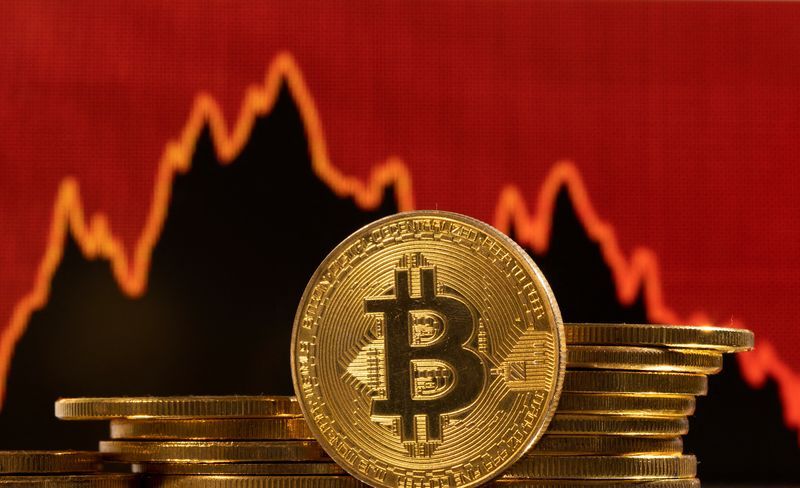Bitcoin price continued to fall on Thursday, due to selling pressure from Bitcoin mining operators, refunds from Mt. Gox and actions by the German state of Saxony. However, one cryptocurrency expert told Investing.com that the ongoing downtrend could be “a bear trap.”
Why is Bitcoin price in a downtrend?
The defunct Mt. Gox exchange remains a key problem for the world’s largest cryptocurrency, and the platform’s administrators recently began refunding tokens to customers affected by a 2014 hack. The exact amount of this distribution is unclear, but wallets linked to the platform moved roughly $9 billion worth of tokens earlier this year.
Additionally, the German government has been disposing of Bitcoin confiscated from a hacking website, which potentially holds at least $2 billion worth of tokens.
The sharp drop in Bitcoin's price has raised fears that major Bitcoin miners may start selling some of their holdings to break even, particularly after the Bitcoin halving earlier this year reduced miner rewards.
These factors have weighed significantly on BTC in the recent period, shaving approximately 15% of its value over the past month.
Cryptocurrency expert weighs in
Bitcoin is currently trading above the $58,000 mark, having bounced from last week’s low of $53,600. The cryptocurrency remains in a technical downtrend since March’s all-time high of $73,800, with consecutive lower highs at $71,300 and $63,900.
Eugene Cheung, Head of Institutions at Bybit, said that while optimism remains on the medium-term outlook, the cryptocurrency market is not immune to abrupt macro events that could significantly impact global market sentiment. However, Cheung notes that the $57,000 support level has so far helped hold Bitcoin’s price, indicating market resilience and limiting future declines.
“If the price can climb back above the 200-day moving average quickly, this recent drop could be considered a bear trap and an upside rally could be expected,” Cheung told Investing.com.
Historically, market corrections have acted as healthy resets within ongoing bull markets, aligning with well-established trends. Cheung notes that there has been a decline in trading activity and cryptocurrency prices on centralized exchanges for nearly two months following the halving event in previous Bitcoin cycles, a pattern that has been repeated in the current cycle.
“Market cycles can last 12 to 18 months after the Bitcoin halving before producing a new cycle peak,” he said. “Despite common fears that “this time is different,” the cyclical nature of markets often means that history doesn’t repeat itself, but it certainly rhymes.”
Meanwhile, recent data from on-chain and market data analytics firm CryptoQuant offers a different perspective, suggesting that a major Bitcoin price correction or the start of a sustained bear market could be imminent as the P/L ratio hovers around its 365-day moving average. Previous bearish crossovers preceded significant declines in May and November 2021.
CryptoQuant’s Bitcoin Bull-Bear Market Cycle Indicator is also approaching a critical level that signals a potential decline into a bear market.









